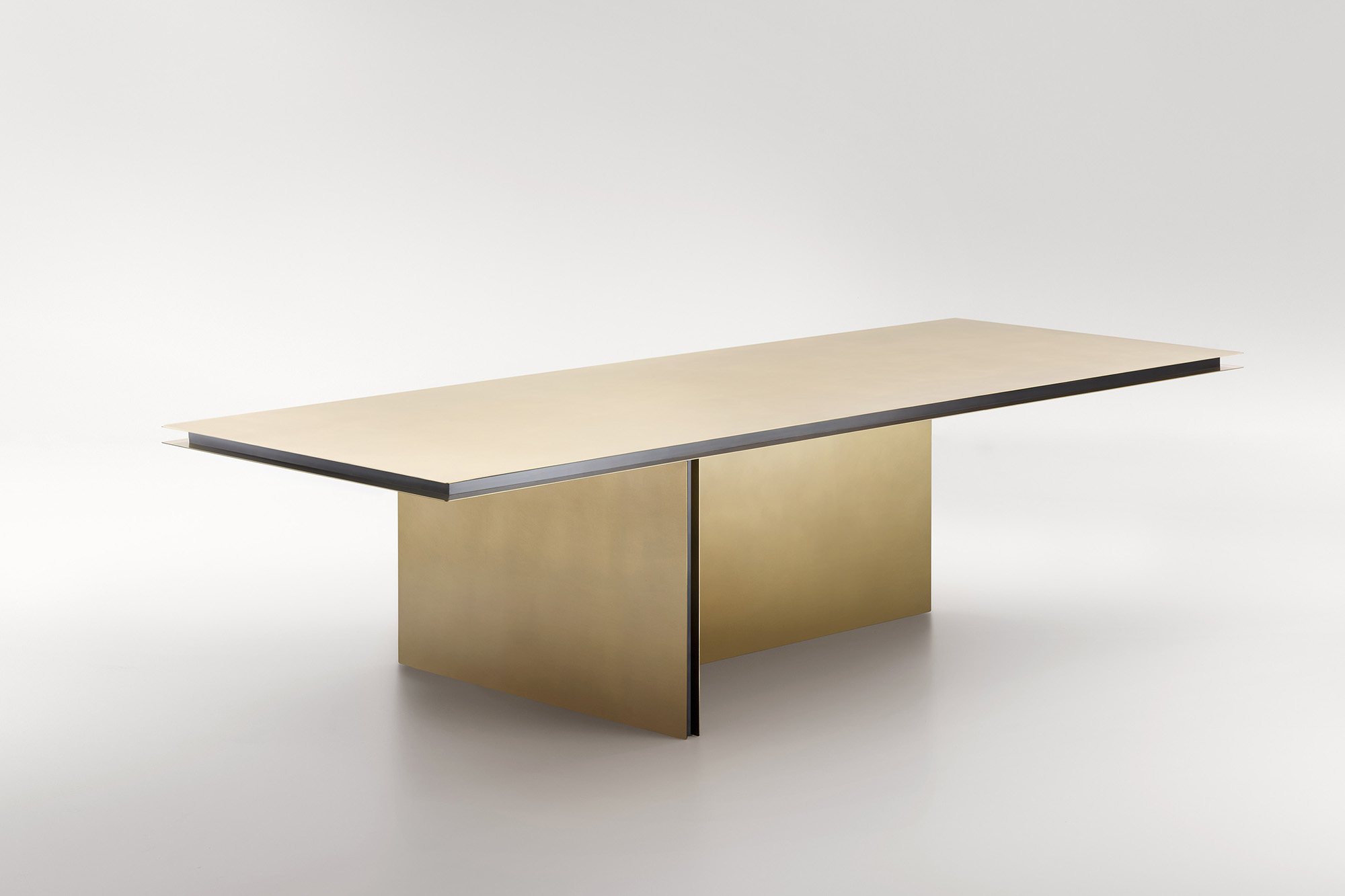De Castelli, the company founded in 2003 by Albino Celato, carries on the artisan tradition of metalworking through the language of design combined with the use of the most advanced technologies. Its headquarters in Crocetta del Montello houses a rich library of materials -such as stainless steel, brass and copper – and the workshops where pieces of furniture, surfaces and bespoke projects takes shape as a result of constant research, experimentation and numerous collaborations with Italian and international designers. In Milan, Via Visconti di Modrone is sited the Showroom, a space designed by Cino Zucchi that reflects the company’s vision of design, architecture and craftsmanship.
Interview with Albino Celato, Founder & CEO of De Castelli.
Easy Engineering: What are the main areas of activity of the company?
Albino Celato: For De Castelli, every project is a creative act that is translated into architectures, surfaces or objects that retain in themselves what is a carefully crafted and custom-developed approach. The equation is reversed: the coldness of metal at the edges of furniture projects brings stainless steel, brass and copper, in their many variations and finishes, back to the center of a renewed scene, differentiating them from any other production. The encounter with design inspires an approach to materials founded upon respect for their potential, be it hidden or obvious, which emerges slowly in a collection of pieces of furniture and Surfaces that, despite being part of a series, remain unique. The desire to design and develop increasingly complex ideas has led the company to set up an effective system for the realization of architectural-scale projects. These include, to name a few, the Archimbuto by Cino Zucchi created for the Italian Pavilion at the 2014 International Architecture Exhibition, the OVS and Excelsior Pavilions at Expo 2015 in Milan by architects Zito and Pedron, and the work Echo by the Pezo von Ellrichshausen studio at FuoriSalone 2019 in Milan, and again other collaboration for Biennale Architettura 2023 with Studio AMAA. Over the years De Castelli has also created many operas for cultural exhibitions: among the latest Tracing Venice by Zanellato/Bortotto for Homo Faber in Venice in 2022.

E.E: What’s the news about new products?
A.C: Glyphé is the name of De Castelli’s research project, premiered at the Milan Furniture Fair 2023: an experimentation with new complex and overlapping processes that draw inspiration from traditional forging techniques, replacing iron with brass. The process involves several steps of beating, oxidation, polishing, brushing, and sanding that create deformations of the material on thick plates and traces on the metal. Thus emerges an innovative topographical design featuring unusual patterns, landscape effects and striking geological maps. The outcome of 2023 research is Xilo coffee table designed by delineo Design Studio, embellished with unique marks on matter. Associated with this are the other new proposals, expression of Biomorphic 2022 research, such as the Ripple cabinet by Marco Pisati, the Sinestesia console table, the Monolite partition by Tipstudio and the Airframe freestanding bookcase by Pio and Tito Toso, and the Folio table by Draw Studio. Working in this way, De Castelli confirms its relationship with the design world, which aims to create objects that interpret and enhance the company’s exclusive materials, technologies and finishes.
E.E: What are the ranges of products?
A.C: De Castelli was one of the first Italian companies to introduce design into metalworking, giving it back a privileged role in design experimentation. A so-called “hard couture” that was able to impart lightness to metal in a new, unprecedented way. With stainelees steel, copper and brass used with craftsmanship combined with advanced technologies, the company gives life to furnishing complements, to proposals for interior surfaces, to experimentations on finishes. De Castelli has also been oriented for years toward collaborations with architects from which numerous architectures and projects are born.

E.E: At what stage is the market where you are currently active?
A.C: De Castelli is “active” worldwide. Our international distribution includes some booming markets like Saudi Arabia or Israel and some others which keep the positions and potentials like Germany, Italy and France.
Our products and solutions are suitable for many different projects, and they can harmonize with styles and languages of different cultures.
The secret is not only having strong local partners but also to listen and understand the dynamic evolutions of the different markets providing solutions which are useful and coherent with our soul and DNA.
E.E: What can you tell us about market trends?
A.C: In the latest years we saw the booming of brass in interiors and architecture recalling 30s style. Now, we are expecting a revamping on the consideration of stainless steel which, with a sophisticated and elegant touch, will be brought to an entirely new stage.
A.C: The innovative product in De Castelli is the research itself.
With Glyphé, De Castelli’s latest research, the company has refined and reinterpreted the ancient technique of metal forging through experimental methods. Complex and layered processes are applied to brass, which is now thick enough to be shaped under the combined action of fire and pressure, creating a modern and elegant aesthetic. The research designed for high-end global retail, has been applied to Xilo, a coffee table designed by Delineo Design characterized by rhythmic movements.

E.E: What estimations do you have for 2023?
A.C: “Giving oneself goals is the salt of life,” says company founder Albino Celato, “a dream realized is the De Castelli brand.” Born and raised with values closely linked to know-how and metalworking, the brand today continues to have the same goal: to focus on the evolution and new interpretations of materials and their possibilities for development, updating the techniques within its factories every day. An important support has been the facilitations from the government with 4.0, which have allowed for the renewal of technology through the digitization of production processes and the use of innovative machinery that operates similarly to the beaters of the late 1800s early 1900s, in a continuous blending of technology and manual skill, always guaranteeing quality.

